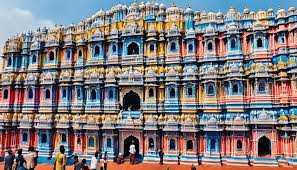Chennai, the bustling capital of Tamil Nadu, is often described as the cultural heart of South India. With a rich history that spans over two millennia, the city boasts a vibrant tapestry of traditions, art, architecture, and spirituality. From its majestic temples to its informative museums and historical sites, Chennai offers an enriching journey for anyone keen on exploring South Indian culture. In this blog, we’ll delve into some of the city’s most significant cultural gems, focusing on its temples, museums, and historical landmarks.
1. Temples: Sacred Sanctuaries of Chennai
Kapaleeshwarar Temple
One of the most iconic temples in Chennai, Kapaleeshwarar Temple is a shining example of Dravidian architecture. Dedicated to Lord Shiva, this temple, located in the Mylapore neighborhood, is over 1,300 years old, though the present structure was built in the 16th century. The temple’s towering gopuram (gateway tower) is adorned with colorful sculptures of gods, goddesses, and mythical creatures. Devotees and tourists alike are drawn to its spiritual aura, intricate carvings, and the rich history embedded within its walls.
The temple hosts several festivals throughout the year, with Panguni Peruvizha being the most prominent, attracting thousands of worshippers. Beyond its religious significance, the Kapaleeshwarar Temple offers visitors a glimpse into traditional Tamil architecture and ritual practices.
Parthasarathy Temple
Located in the Triplicane area, Parthasarathy Temple is one of the oldest temples in Chennai, dating back to the 8th century. This temple is dedicated to Lord Krishna, known here as Parthasarathy, the charioteer of Arjuna in the Mahabharata. What sets this temple apart is its depiction of Lord Krishna with a mustache, a unique feature not commonly seen in other temples.
The temple’s architecture is a blend of Dravidian and Pallava styles, making it a must-visit for those interested in ancient South Indian art forms. The annual Theppam (Float) Festival is a major attraction, where deities are taken on beautifully decorated floats in the temple tank.
Vadapalani Murugan Temple
A prominent pilgrimage site, Vadapalani Murugan Temple is dedicated to Lord Murugan, the Tamil god of war. Originally a small shrine built in the 19th century, it has since grown into a sprawling temple complex, attracting devotees from across India. The temple is renowned for its vibrant gopuram, which features over 40 colorful sculptures depicting various stories from Hindu mythology.
The temple is particularly popular during Thaipusam, a festival celebrating the birth of Lord Murugan, when thousands of devotees come to offer prayers and participate in processions.
2. Museums: Windows to Chennai’s Past and Present
Government Museum, Egmore
The Government Museum in Egmore is one of the oldest and largest museums in India, established in 1851. Spanning several buildings, the museum houses an impressive collection of artifacts across various domains, including archaeology, numismatics, zoology, and art.
The Bronze Gallery, featuring exquisite Chola bronzes, is one of the most revered sections of the museum. These ancient sculptures, particularly those of Nataraja (Lord Shiva as the cosmic dancer), are celebrated for their intricate craftsmanship and spiritual significance. The museum also boasts a rich collection of Roman antiquities, including coins, pottery, and even a Roman amphora that dates back to the early Christian era.
For art enthusiasts, the museum’s Contemporary Art Gallery provides a glimpse into modern South Indian art. The museum complex also includes a natural history section, making it a comprehensive destination for anyone interested in history, art, and science.
Chennai Rail Museum
Railways have played a pivotal role in the development of modern India, and the Chennai Rail Museum celebrates this legacy. Located in the ICF (Integral Coach Factory) area, the museum showcases the history of Indian Railways, particularly the role Chennai has played in the evolution of train travel.
Visitors can explore an array of vintage locomotives, coaches, and railway artifacts. The museum’s toy train ride is a favorite among children, while the galleries offer insights into the technical and historical aspects of India’s vast railway network.
Vivekananda House
For those interested in spirituality and the teachings of Swami Vivekananda, the Vivekananda House on Marina Beach is a must-visit. This historic building is where Swami Vivekananda stayed during his visit to Chennai in 1897, following his return from the World’s Parliament of Religions in Chicago.
The house is now a museum that chronicles the life and teachings of the great spiritual leader. Interactive exhibits, photographs, and rare artifacts provide a deep understanding of his philosophy and his role in spreading Vedanta and yoga to the West.
3. Historical Sites: Tracing Chennai’s Rich History
Fort St. George
Established in 1644 by the British East India Company, Fort St. George is a significant historical landmark and the first English fortress in India. Today, it serves as the administrative headquarters of the Tamil Nadu government, but much of the fort is open to the public.
The Fort Museum within its premises houses a fascinating collection of colonial-era artifacts, including weapons, uniforms, and documents that shed light on the British presence in India. The fort also contains St. Mary’s Church, the oldest Anglican church in India, and Wellesley House, which served as the residence of the Governor of Madras.
San Thome Basilica
A striking Gothic-style church, San Thome Basilica is one of only three churches in the world built over the tomb of an apostle of Jesus Christ, St. Thomas. The original church was constructed by Portuguese explorers in the 16th century and later rebuilt in a neo-Gothic style by the British in the 19th century.
The basilica is not only a place of worship but also a major pilgrimage site for Christians. Visitors can explore the tomb of St. Thomas in the crypt below the basilica, as well as the small museum that houses relics and artifacts related to the saint’s life.
Theosophical Society
Located in the tranquil Adyar neighborhood, the Theosophical Society is a peaceful retreat for those interested in philosophy, spirituality, and nature. Founded in 1875, the society promotes the study of comparative religion, philosophy, and science. The sprawling campus is home to the famous Adyar Banyan Tree, one of the largest and oldest banyan trees in the world.
Visitors can explore the society’s library, which contains rare manuscripts and books on ancient wisdom, and attend lectures and workshops on various spiritual topics.
Conclusion
Chennai’s cultural landscape is a rich blend of tradition, spirituality, and history. From the awe-inspiring architecture of its temples to the informative and artistic exhibits in its museums, and the historical significance of its landmarks, the city offers a comprehensive cultural experience. Whether you are a history buff, an art enthusiast, or a spiritual seeker, Chennai’s cultural gems are sure to leave you with lasting memories and a deeper appreciation for South Indian heritage.

